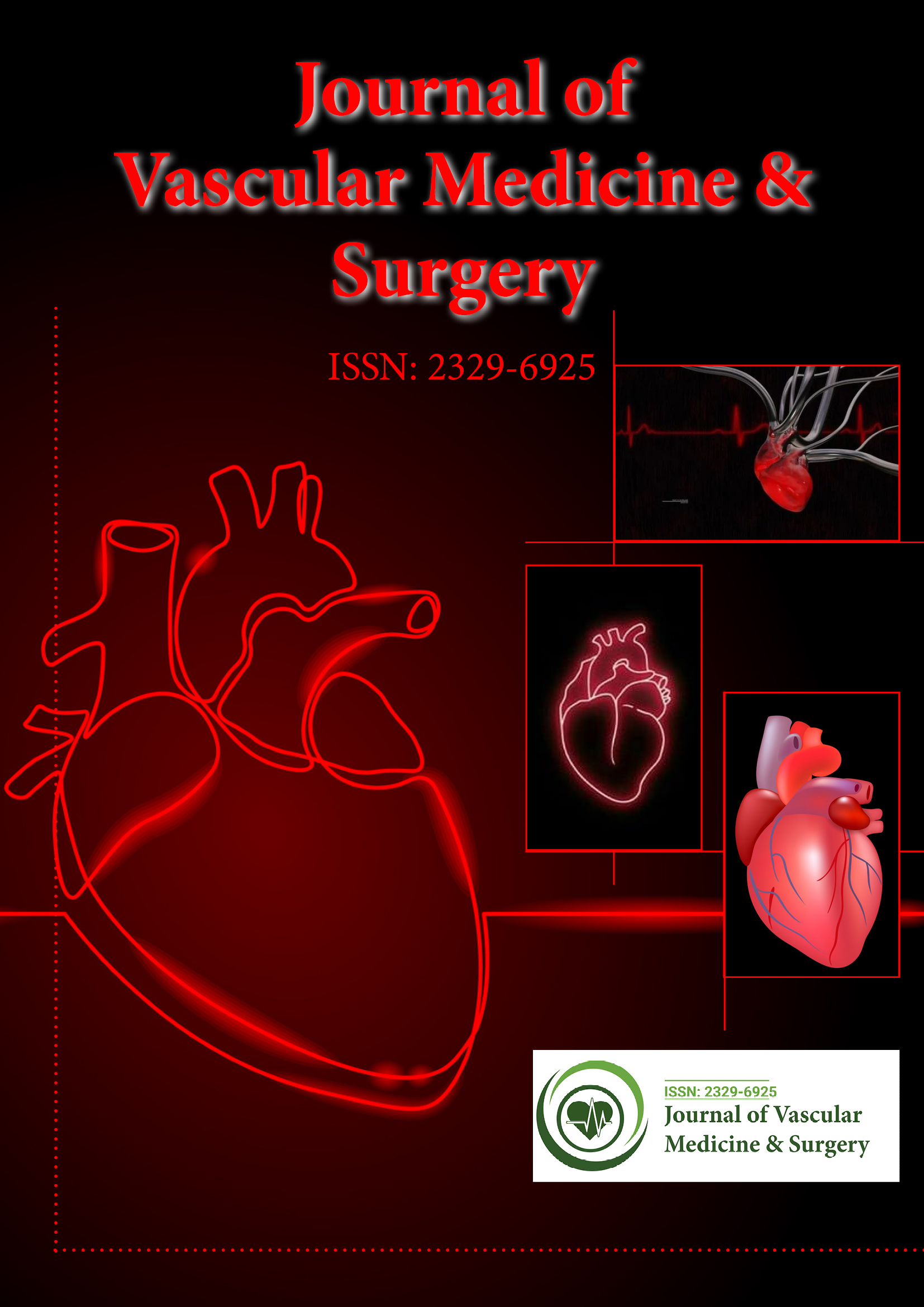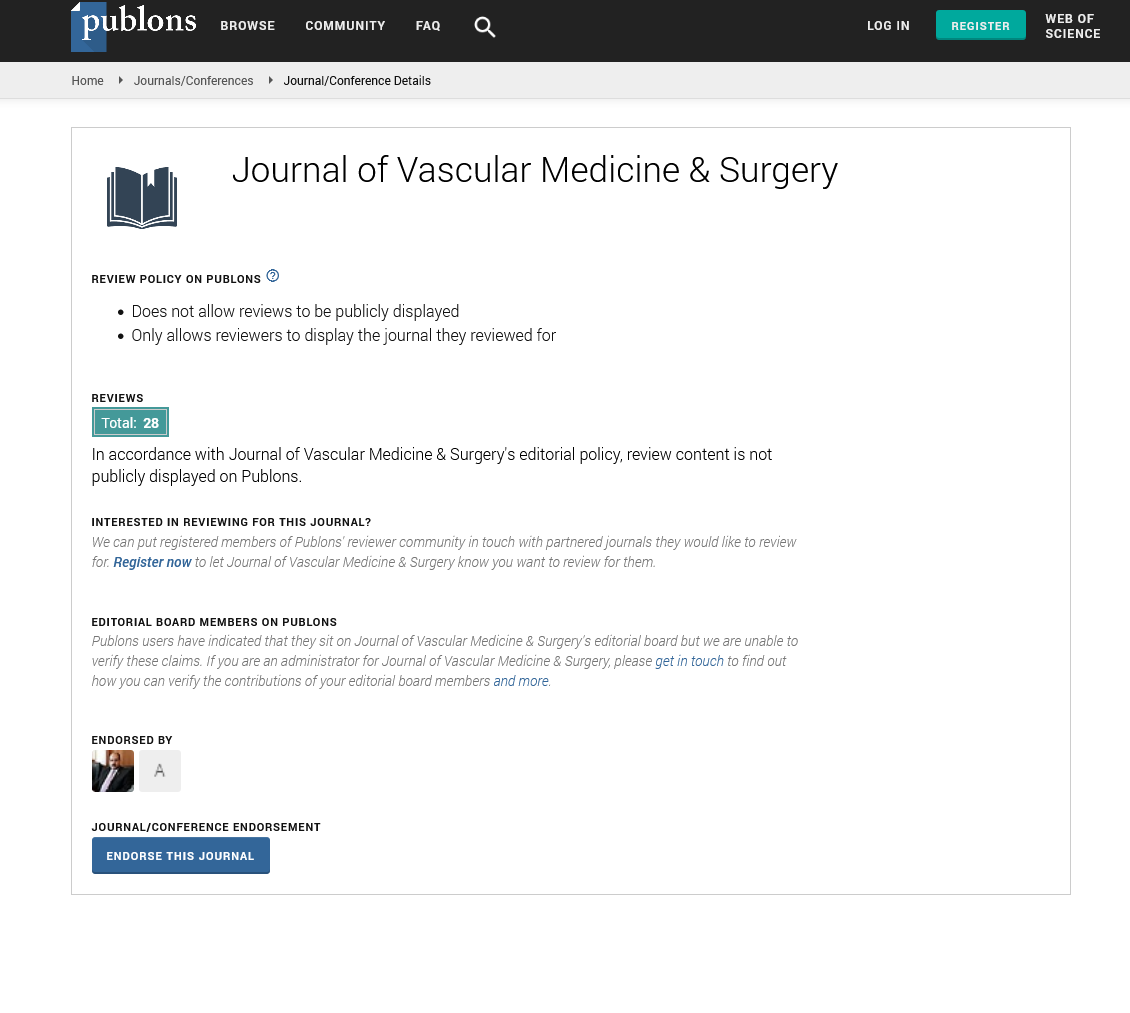Indexed In
- Open J Gate
- Academic Keys
- RefSeek
- Hamdard University
- EBSCO A-Z
- OCLC- WorldCat
- Publons
- Euro Pub
- Google Scholar
- SHERPA ROMEO
Useful Links
Share This Page
Journal Flyer

Open Access Journals
- Agri and Aquaculture
- Biochemistry
- Bioinformatics & Systems Biology
- Business & Management
- Chemistry
- Clinical Sciences
- Engineering
- Food & Nutrition
- General Science
- Genetics & Molecular Biology
- Immunology & Microbiology
- Medical Sciences
- Neuroscience & Psychology
- Nursing & Health Care
- Pharmaceutical Sciences
Commentary Article - (2023) Volume 0, Issue 0
Risk Factors of Peripheral Artery Disease and its Symptoms
Majeed Bierowski*Received: 07-Jun-2023, Manuscript No. JVMS-23-22228; Editor assigned: 09-Jun-2023, Pre QC No. JVMS-23-22228 (PQ); Reviewed: 23-Jun-2023, QC No. JVMS-23-22228; Revised: 30-Jun-2023, Manuscript No. JVMS-23-22228 (R); Published: 10-Jul-2023, DOI: 10.35248/2329-6925.23.S16.518
Description
Peripheral Artery Disease (PAD) is a common vascular condition characterized by the reduction or blockage of arteries that supply blood to the limbs, usually the legs. It is caused by atherosclerosis, which leads to reduced blood flow to the muscles and tissues of the lower extremities. PAD is associated with increased morbidity and mortality, and it affects a significant proportion of the population, particularly older adults and those with other cardiovascular risk factors.
Risk factors and symptoms of peripheral artery disease
Various risk factors contribute to the development of PAD, including smoking, diabetes, hypertension, dyslipidemia, obesity, and a sedentary lifestyle. These factors contribute to the progression of atherosclerosis and the reducing of arterial vessels. Common symptoms of PAD include intermittent claudication, characterized by leg pain or cramping during walking or exercise, which improves with meditation. Severe cases may cause pain while recuperation, non-healing ulcers, or gangrene.
Diagnostic approaches of peripheral artery disease
The diagnosis of PAD involves a combination of clinical evaluation, physical examination, and non-invasive tests. Ankle- Brachial Index (ABI) measurement is a widely used non-invasive test that compares blood pressure measurements in the arms and ankles to assess arterial blood flow. Other diagnostic tests, such as segmental limb pressures, Doppler ultrasound, and imaging modalities such as Computed Tomography Angiography (CTA) or Magnetic Resonance Angiography (MRA), may be used to evaluate the extent and severity of arterial blockages.
Management strategies of peripheral artery disease
The management of PAD aims to improve symptoms, prevent disease progression, and reduce the risk of cardiovascular events. Lifestyle modifications, such as smoking cessation, regular exercise, healthy diet, weight management, and blood pressure and cholesterol control, are important for overall cardiovascular health and it can help to alleviate symptoms. Medications, including antiplatelet agents, statins, and vasodilators, are prescribed to control risk factors and improve blood flow. In severe cases, endovascular procedures such as angioplasty with stenting or surgical interventions surgical procedures such as bypass transplantation may be required.
Rehabilitation and managed exercise programmes
Management exercise programs are an important component of PAD management. These programs involve structured, monitored exercise sessions aimed at improving functional capacity, reducing symptoms, and enhancing overall cardiovascular health. Exercise modalities may include walking, cycling, or treadmill exercises. Supervised exercise programs provide guidance, support, and regular monitoring of progress, ensuring safety and optimizing outcomes.
Prevention of peripheral artery disease
Preventing the progression of PAD and reducing cardiovascular risk factors is essential. Public health initiatives that promote awareness, healthy behaviors, and early detection play an important role in reducing the expense of PAD. Regular monitoring with healthcare professionals is essential to monitor disease progression, optimize treatment, and address any new symptoms or complications. Long-term management of risk factors and adherence to medications and lifestyle modifications are vital for preventing disease recurrence and maintaining overall cardiovascular health.
Future research
Future research in PAD focuses on novel therapies, advanced imaging techniques, and targeted interventions. Development of new medications, regenerative therapies, and gene therapies may provide optimistic possibilities for treatment. The integration of advanced imaging technologies and computational modeling may help to optimize treatment techniques and personalize patient care.
Citation: Bierowski M (2023) Risk Factors of Peripheral Artery Disease and its Symptoms. J Vasc Surg. S16:518.
Copyright: © 2023 Bierowski M. This is an open access article distributed under the terms of the Creative Commons Attribution License, which permits unrestricted use, distribution, and reproduction in any medium, provided the original author and source are credited.

